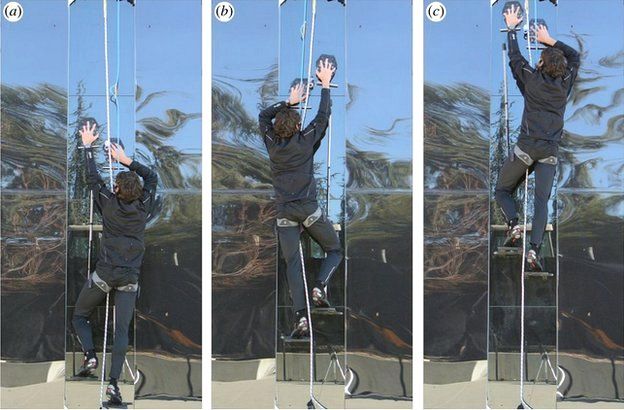Geckos inspire 'Spider-Man' gloves
- Published

The way geckos climb has inspired a device that allowed a 70kg man to scale a glass wall like Spider-Man.
Much research has gone into trying to unlock the clever way that little geckos climb.
But trying to use gecko adhesion to work at larger scales - such as on a human hand - without any loss of performance has proven difficult.
The hand-sized silicone pads created by a team at Stanford University keep their adhesive strength at all sizes.
They employ the same attractive and repulsive forces between molecules - known as van der Waals forces - that geckos use.
Although the forces are very weak, the effect is multiplied across the many tiny hairs that cover the toes of a gecko, allowing them to stick firmly to surfaces.
Along the same lines, the Stanford team created tiny tiles called microwedges to harness van der Waals forces. They were able to produce a dry adhesive even more efficient than that of the gecko.
In tests, the 70kg (11 stone) climber successfully scaled a 3.6m-high vertical glass wall using 140 sq cm silicone pads in each hand.
The climber tested the adhesive hundreds of times on the wall without failure.
Earlier this year, America's Defence Advanced Research Projects Agency (Darpa) demonstrated another climbing device which allowed a person to scale a sheer glass wall.
However, the exact details of their climbing method remain classified.
This latest effort was also a collaboration with Darpa. The agency's Z-Man programme aims to develop biologically-inspired climbing aids for soldiers without the need for ropes and ladders.
The team at Stanford have published their findings in the Royal Society journal Interface.
- Published8 November 2012